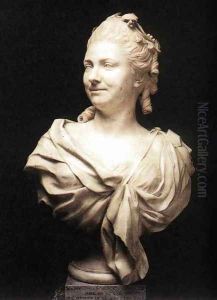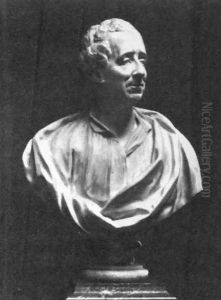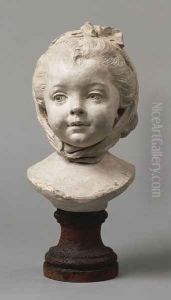Jean-Baptiste Lemoyne II Paintings
Jean-Baptiste Lemoyne II was a prominent French sculptor who played a significant role in the development of French sculpture during the 18th century. Born on February 15, 1704, in Paris, France, he was the son of Jean-Louis Lemoyne, also a sculptor, which suggests that he was born into an environment that was highly conducive to his future career in the arts. Lemoyne's family background provided him with the opportunity to train and learn from his father from an early age. His talent was evident, and he quickly became one of the leading sculptors of his time.
Lemoyne's work was characterized by its elegance and expressive style, which reflected the Rococo movement that was popular during his lifetime. He was adept at capturing the delicate and refined qualities that were favored by the aristocracy of the time. His sculptures often featured mythological or allegorical subjects, as well as portraits of notable figures. One of his most famous works is the bust of King Louis XV, which exemplified his skill in portraying the dignity and grace of his subjects.
Despite his success, Lemoyne's career was not without controversy. Some of his contemporaries, including the influential philosopher Denis Diderot, criticized his work for being too ornate and lacking in the moral seriousness that was becoming fashionable with the rise of Neoclassicism. Nevertheless, Lemoyne's reputation remained largely intact, and he continued to receive important commissions throughout his career.
In addition to his work as a sculptor, Lemoyne also played a significant role in the education of future artists as a teacher. He was appointed as a professor at the Royal Academy of Painting and Sculpture in Paris, where he influenced a generation of sculptors, including his most famous pupil, Jean-Antoine Houdon, who would go on to become one of the leading sculptors of the Neoclassical era.
Jean-Baptiste Lemoyne II passed away on May 25, 1778, in Paris. His work remains an important part of the art historical canon and continues to be studied and appreciated for its craftsmanship and beauty. Lemoyne's legacy is reflected in the works of his students and in the continued admiration for the Rococo style, which he helped to define.


